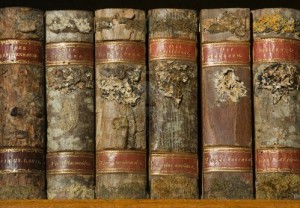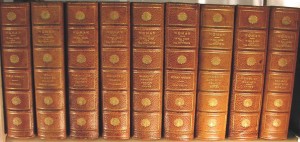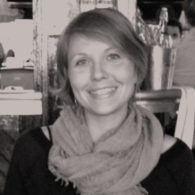Where to Put a Dead Painting
 As a decidedly not-art-historian who believes that painting is dead (and cannot understand how, as a medium-specific discipline, painting is not dead), I was surprised to be hired by the Feitelson/Lundeberg Art Foundation (F/LAF) as a researcher and project coordinator for four publications–two monographs and two catalogues raisonné–on the painters Lorser Feitelson and Helen Lundeberg. Considering I do not have an extraordinary background in Art History, and nobody else working on this thing has ever done such a thing before, it is going pretty well, I guess. While experience in creating a catalogue raisonné would certainly be useful, I do bring to the project the care I have developed in the past two years for these artists and their work, and thus a desire to help produce a catalogue of integrity.
As a decidedly not-art-historian who believes that painting is dead (and cannot understand how, as a medium-specific discipline, painting is not dead), I was surprised to be hired by the Feitelson/Lundeberg Art Foundation (F/LAF) as a researcher and project coordinator for four publications–two monographs and two catalogues raisonné–on the painters Lorser Feitelson and Helen Lundeberg. Considering I do not have an extraordinary background in Art History, and nobody else working on this thing has ever done such a thing before, it is going pretty well, I guess. While experience in creating a catalogue raisonné would certainly be useful, I do bring to the project the care I have developed in the past two years for these artists and their work, and thus a desire to help produce a catalogue of integrity.
Therefore, I have been trying to understand this project as a future object as well as a scholarly document and research tool. This is really the only instance (outside of databases, which are not usually publicly accessible) in which all possible data is gathered on one work of art (titles, dimensions, inscriptions, provenance, exhibition history, literature references, etc.) and published in its raw form. It is a little like publishing a scientific study, except that we are publishing raw data, not an analysis.
Unlike most scientific studies, where an experiment (complete with a control group) is created to collect data, the catalogue raisonné uses a found data set. Data points are chased down through old sales records, auction houses listings, exhibition catalogues, and email chains, while others arrive like little wrapped chocolates in my inbox, answering an advertisement. The hurdles in locating and identifying paintings are maddening: collectors are dead, collectors can’t be found, collectors are too famous to return correspondence, collectors want to be your best friend, collectors have lost paintings in disasters (and in storage), and collectors and dealers have long-standing grudges and anger over who knows what, preventing their participation in the project. But then, there are the lucky breaks: the art historian who found a painting at a flea market, the photograph of a painting known to have been destroyed, the note from a collector to the artist with a list of what paintings she bought.
 These hard-earned kernels of information feel like gems, and it can be difficult to be critical of them, to question whether they really belong. Unlike the rules of the scientific method, data for a catalogue raisonné is not analyzed with a standard deviation to account for outliers. Scholars (and myself) simply pick what data points to include. Will we only include paintings? Studies for paintings? Unsigned paintings? Copies? Unfinished works? What about works that may be forged? Or very bad paintings? The Catalogue Raisonné Scholars Association provides a forum for discussing such topics and comparing catalogue raisonné projects, but, of course, there are no formal guidelines, only previous suggestions.
These hard-earned kernels of information feel like gems, and it can be difficult to be critical of them, to question whether they really belong. Unlike the rules of the scientific method, data for a catalogue raisonné is not analyzed with a standard deviation to account for outliers. Scholars (and myself) simply pick what data points to include. Will we only include paintings? Studies for paintings? Unsigned paintings? Copies? Unfinished works? What about works that may be forged? Or very bad paintings? The Catalogue Raisonné Scholars Association provides a forum for discussing such topics and comparing catalogue raisonné projects, but, of course, there are no formal guidelines, only previous suggestions.
Decisions about what to include in the catalogue become ever more important, because unlike a scientific study, where multiple studies might be created to answer the same questions from different angles, a catalogue raisonné is often considered an ultimate resource in and of itself. Rarely are two catalogues raisonné created for the same artist in the same century. Certainly almost all catalogues raisonné are followed with supplements, as more works will pop up in the future and must be acknowledged and included, and some artists are honored with different catalogues raisonné separated by medium, but scholars usually do not choose to repeat the work of others.
In helping create a document that is respected simply because of its genre, it’s important to think about what choices are being made. How do we curate data without changing the way it will be read? Even if we present all the raw data without analysis, the way in which we choose, organize, and stage the works of art creates a curated object. We are presenting future scholars with one particular way of viewing an artist’s body of work.
 This is where we must return to the glorified discipline of science and admit that the practice of the scientific study’s “methods section” is useful. The inclusion or admission of a questionable piece of work should be explained in great detail and with humility. The decision to list works chronologically, by medium, by subject matter, or by project changes the way a reader views the artist, so such choices should be explained. And, while unknown histories and mysterious current locales of artworks feel defeating after so much time spent on the hunt, admitting defeat and leaving holes in the catalogue raisonné is what allows for further useful scholarship.
This is where we must return to the glorified discipline of science and admit that the practice of the scientific study’s “methods section” is useful. The inclusion or admission of a questionable piece of work should be explained in great detail and with humility. The decision to list works chronologically, by medium, by subject matter, or by project changes the way a reader views the artist, so such choices should be explained. And, while unknown histories and mysterious current locales of artworks feel defeating after so much time spent on the hunt, admitting defeat and leaving holes in the catalogue raisonné is what allows for further useful scholarship.
Another way to address the issues presented by the catalogue raisonné is to turn to science’s best friend: technology. The recent trend in publishing catalogues raisonné online provides a beautiful solution to some drawbacks of the printed catalogue raisonné.
Firstly, an online catalogue raisonné is much more easily accessible (and searchable), so that decisions on how to organize data points are less necessary. Users could search by year, medium, collection, or exhibition for artworks, thus eliminating some bias from the way data is presented. Furthermore, the online publication allows the ongoing nature of a catalogue raisonné to exist in a more natural state. A catalogue raisonné can never be completed even after printing because new details from the past will undoubtedly emerge and paintings will continue to be purchased and sold, exhibited, and written about. Creating an editable, ever-evolving platform will allow scholarship to stay updated, and provide people like me endless hours of fun researching, double-checking, and entering data(as well as job security).
 However, the online catalogue raisonné brings into question other issues. When and how would the catalogue become accessible? When will it include enough information? When will it be “complete” enough? An online raisonné, as an open document, resists any curating at all. The ever-editable, ever-lasting, online raisonné creates new issues; multiple authors, researchers, and scholars make it difficult for readers to interpret the raisonné based on a moment in time or the lense of a particular historian’s scholarship. The specificity of a published catalogue raisonné, with the transparency of a ‘methods section’, while still problematic, allows readers to critically acquire information. Supplemental books can add information to the original raisonné, each providing it’s own new scholarly and historical framework, adding to and possibly critiquing the previous scholarship, thus creating an evolving but specific document.
However, the online catalogue raisonné brings into question other issues. When and how would the catalogue become accessible? When will it include enough information? When will it be “complete” enough? An online raisonné, as an open document, resists any curating at all. The ever-editable, ever-lasting, online raisonné creates new issues; multiple authors, researchers, and scholars make it difficult for readers to interpret the raisonné based on a moment in time or the lense of a particular historian’s scholarship. The specificity of a published catalogue raisonné, with the transparency of a ‘methods section’, while still problematic, allows readers to critically acquire information. Supplemental books can add information to the original raisonné, each providing it’s own new scholarly and historical framework, adding to and possibly critiquing the previous scholarship, thus creating an evolving but specific document.
No matter the medium, the catalogue raisonné presents unique problems based on its genre. Considering the presentation and curation of data can help scholars present an artist’s work with less bias. Transparency regarding methodology of the catalogue can help present a more accurate, useful document. However, the bottom line is that creating an authoritative document without knowing everything is tricky.



Dilettante Mail
Get updates from us a few times a year.